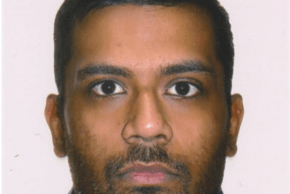Thesis defence : Yannick Yasothan
Add to the calendarModelling and mechanical optimisation of dental restorations. Numerical and experimental developments
ndirect Dental Restoration (IDR) is a treatment proposed in conservative dentistry that consists of removing the damaged part of the tooth, then filling the vacant space by bonding a prosthesis. In recent years, Computer Aided Design and Manufacturing (CAD/CAM) has become a real boom to produce prostheses. However, in the software available on the market, the optimization of the prosthesis is only based on geometrical considerations. No analysis based on mechanical criteria is integrated into the CAD/CAM chain, even though mechanical stresses are one of the leading causes of clinical failures.
Previous work has shown interest in filling this gap through finite element simulations of the mechanical behavior of the patient-specific prosthetic assembly. It revealed the need to improve the mechanical modeling of the adhesive layer of the dental assembly. This layer can be damaged and cause prosthesis debonding. The research carried out during this thesis aims to enrich the knowledge on this critical layer and propose a model that could be integrated into a new mechanical optimization component of the CAD/CAM chain.
First, the internal structure of adhesive layers of model assemblies was visualized in 3D using X-ray microtomography. Using a segmentation method adapted to analyze these 3D images, the defects present in the adhesive layer were detected and quantified. They were classified into two categories: encapsulated defects in the adhesive mass and defects at the interfaces. Their size, shape, and location in the adhesive layer were analyzed.
Secondly, Miniature Mixed Mode Bending (MMMB) tests were performed on millimeter-sized pre-cracked specimens loaded in mixed mode I/II to characterize the behavior of the adhesive layer. The adhesion of the weak interface of an adhesive layer is estimated by the area method, which requires the measurement of the crack length increase. A digital image correlation technique performs this measurement. The dispersion observed in the estimate of Critical Energy Release Rate (CERR) masks the influence of the mixed mode ratio I/II. Because of these results, a mode I analysis of the behavior of the adhesive layers seems sufficient as a first approximation to describe their mechanical behavior. Moreover, the observed dispersion is related to the sensitivity of the adhesion to the bonding protocols and to the "parasitic" dissipated energies, which are not dissociated from the fracture energy when estimating CERR.
Thirdly, a cohesive zone model (bilinear traction-separation law defined by three parameters) of the adhesive layer was identified through an MMMB test using the integrated-digital image correlation technique. The reliability of this method is superior because it allows ignoring part of the "parasitic" energy, which leads to an overestimation of the CERR. Implementing this law in the numerical models evaluating the stress states of the IDRs will allow for predicting the crack propagation of the studied adhesive layer.
Finally, thanks to these studies, a better understanding of dental adhesive layers has been obtained, ultimately allowing for the optimization of manufacturing protocols and increasing the durability of IDRs.
Composition of the jury:
- Guillaume HAIAT - Research Director - MSME, Université Gustave Eiffel (Rapporteur) ;
- Benoit BLAYSAT - Professor - Institut Pascal, Université Clermont Auvergne (Rapporteur) ;
- Yannick TILLIER - Professor - CEMEF, Ecole des Mines de Paris (Examiner) ;
- Laurent TAPIE - Enseignant-chercheur HDR - URB2i, EPF Ecole d'ingénieur-e-s (Examiner) ;
- Elsa VENNAT - Professor - LMPS, CentraleSupélec (Thesis supervisor) ;
- Nicolas SCHMITT - Professor - LMPS, ENS Paris-Saclay (Co-supervisor) ;
- Jan NEGGERS - Senior Lecturer - LMPS, CentraleSupélec (Co-supervisor) ;
